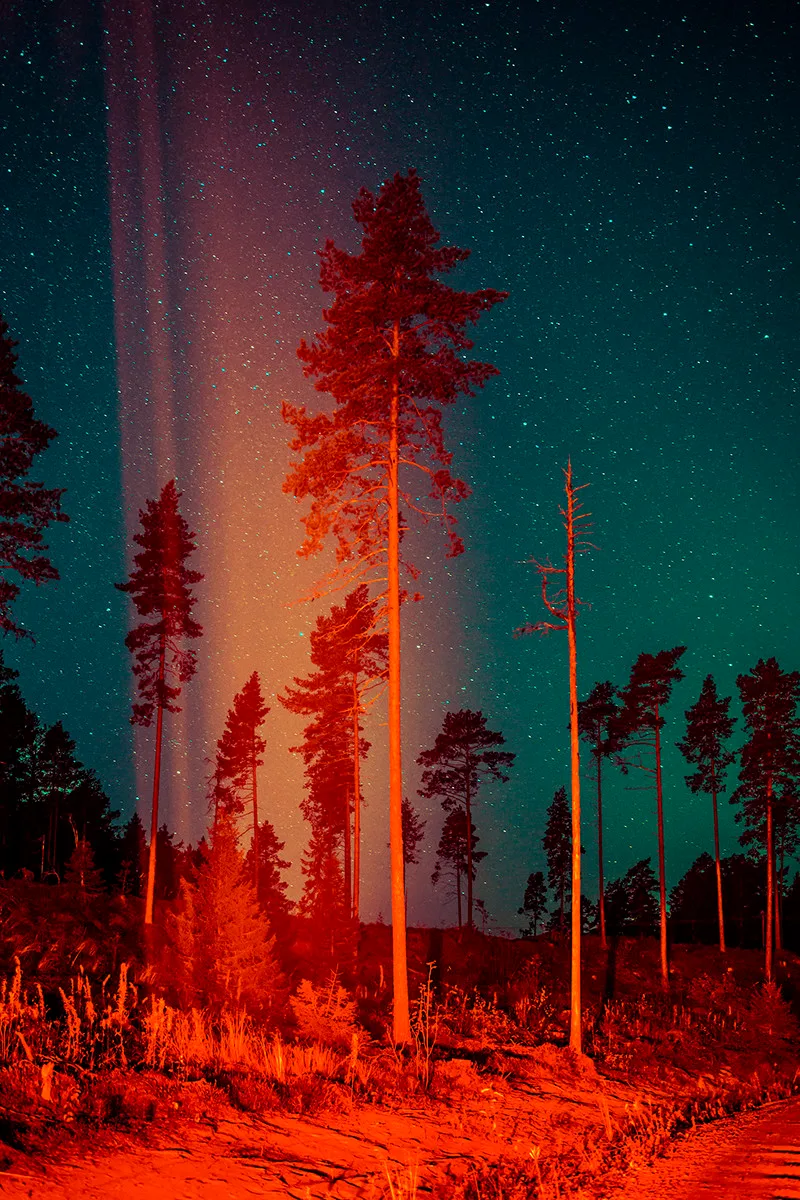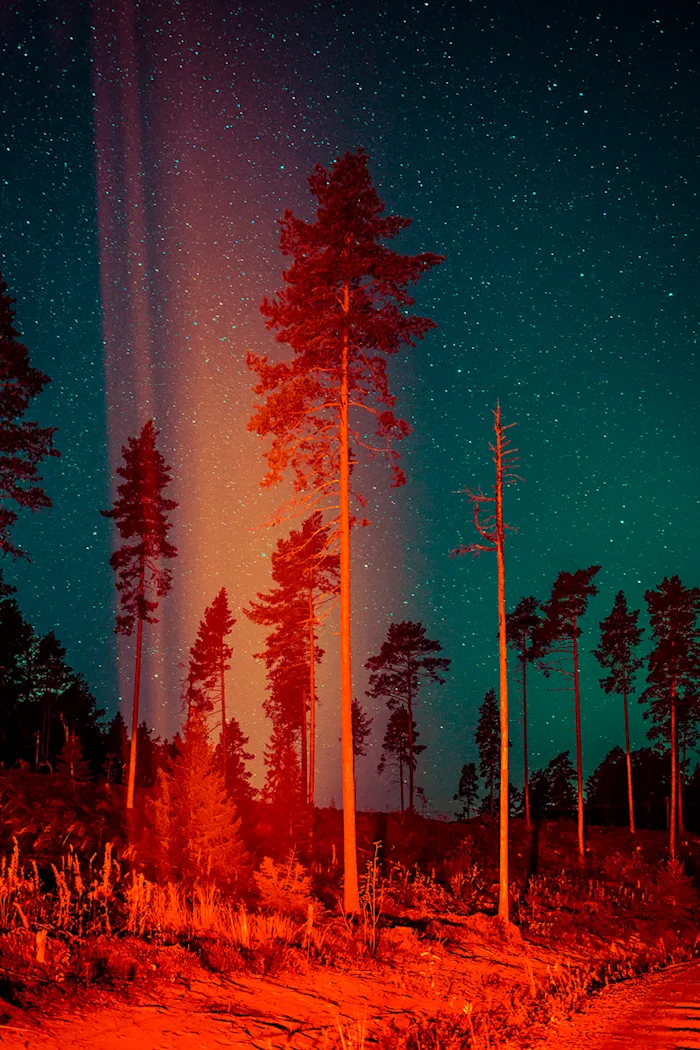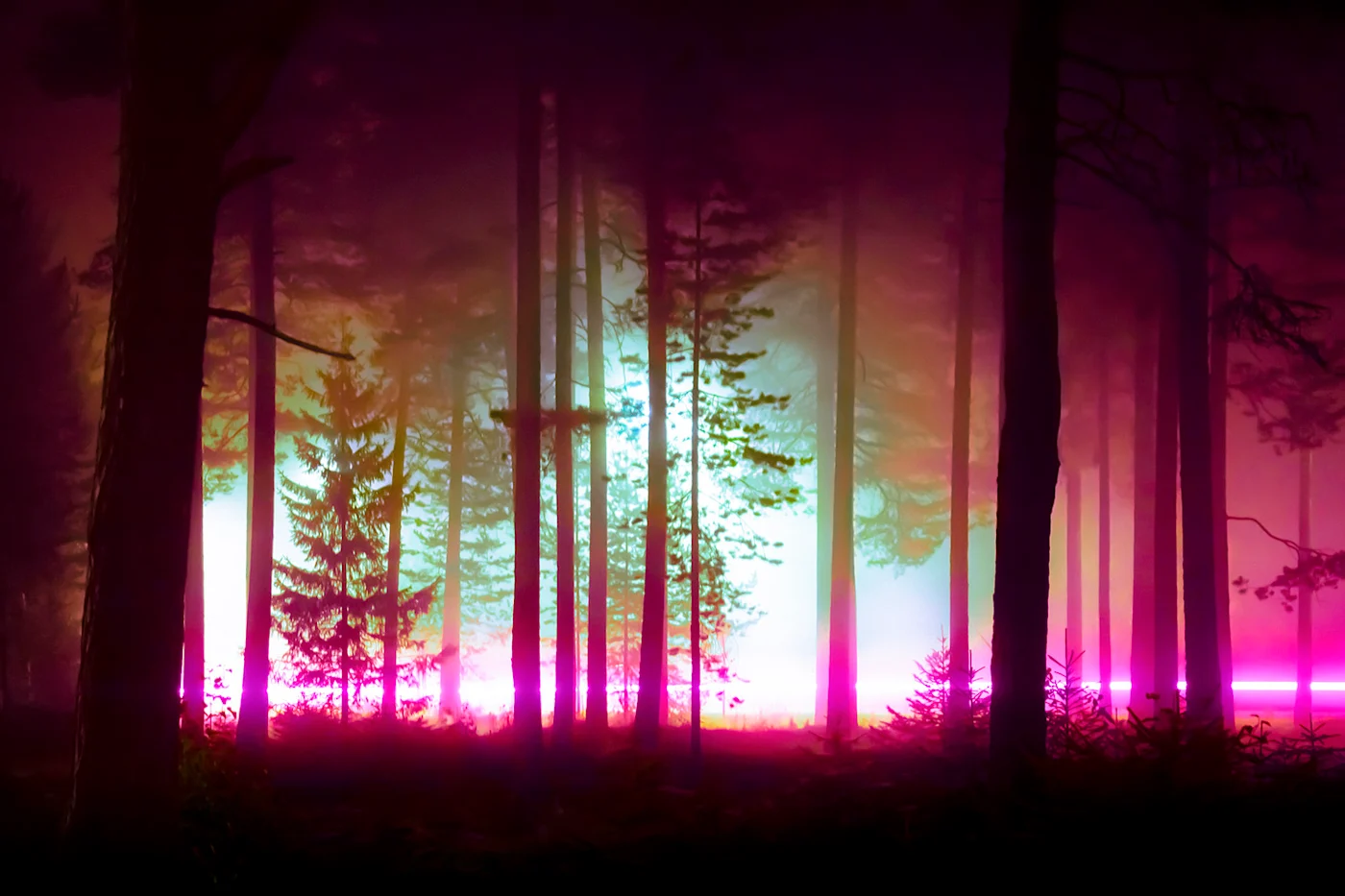UFOs and the Longing for the Unidentified
Wu Ming
During the outbreak of the Covid-19 pandemic in 2020 there was an exponential increase in UFO sightings throughout the West. Then, in February 2023, the concept of “Unidentified aerial phenomena” became central to the dispute between the US and China over alleged spy-balloons.
The Italian writing collective Wu Ming recently published UFO 78, a novel whose principal plot is set between March and May 1978. In it, the kidnapping of former prime minister Aldo Moro by the Red Brigades is intertwined with the great wave of UFO sightings that occurred in Italy that year. The novel closely follows another book, La Q di Qomplotto [The Q of Qonspiracy] (2021), in which a member of the Wu Ming collective developed an anticapitalist take on conspiratorial thinking, taking Qanon as his case study.
In the following essay, which appeared on Wu Ming’s blog Giap on February 24th, 2023 before being expanded for publication on Ill Will, the Italian collective interprets the return of UFOs into our collective imagination and the “longing for the unidentified” not only as a symptom of climate anxiety and our post-pandemic predicament, but also as the manifestation of a "utopian impulse," an attempt to escape a system that forces us to continuously identify ourselves while suffocating any future perspective of radical change.
Other languages: Italiano, Español, Greek, Português
In the mid-2010s, when we started working on UFO 78, there was very little talk about UFOs, at least in the mainstream. Outside of certain niches, the topic had been démodé for years.
Every now and then someone would ask us: “What will the next novel be about?” And we’d answer: “It’s about the UFO obsession that took over Italy in '78.” At that point the interlocutor, with a puzzled expression, would reply: “Oh weird... Why did you decide to write about UFOs?” We’d give some explanation, trying to avoid spoilers. And typically, a big "meh" would print itself on the forehead of the listener.
Then by some whim of history, while we were writing the book, UFO sightings regained public attention. It happened suddenly all over the West, during the great pandemic confinements of 2020. Reports multiplied in quick succession, there were numerous “flaps.”1 Since then, it is safe to say that we’ve been in the midst of a wave of sightings.
This fact is acknowledged in Washington DC, too. In January 2023, the Office of the Director of National Intelligence released its annual report on "unidentified aerial phenomena" — today's official nomenclature, hence the acronym UAP — which provides the numbers for the U.S. Whereas from 2002 to 2017 the intelligence agencies had classified 263 sightings, it recorded 247 (almost the same number) between 2020-2022 alone. A jump in scale, from dozens to hundreds per year.
Still, this is nothing close to the Italian wave of 1978, during which roughly 2,000 sightings were reported that year alone, and in a country much smaller than the US. However, there’s no question that UFOs are back. Or rather, people have returned to seeing them. Why?
Looking to the sky as the prelude to all liberation
When human beings feel cornered, constrained, oppressed, distressed, they turn their eyes to the sky, to the firmament. The act of looking at the starry sky is the prelude to any liberation, any revolution. Is it any coincidence that the latter term originated from stargazing? The "Copernican revolution," from Immanuel Kant onward, is a metaphor for epochal change, for a reversal of perspectives, for entry into a new paradigm of knowledge.
There’s no founding of civilization or beginning of a new phase of history that did not start this way, by looking up, because looking at the sky broadens the perception of space and therefore of possibility, relieves the head from the ballasts of the present, allows one to think more freely — the verb "to consider" comes from being cum sidera, in the company of the stars — and therefore to aspire to something else and better. "And I saw a new heaven and a new earth" (Rev. 21:1).


Think of Hamlet's much-quoted line, "There are more things between heaven and earth, Horatio, than are dreamt of in your philosophy" (Act I, Scene 5). Hamlet utters it after talking to the ghost of his father. When his friend Horatio — formerly a fellow student at Wittenberg — finds the circumstance "wondrous strange," Hamlet replies to him that infinite space implies the infinitude of possibilities and hypotheses, therefore reality exceeds at any moment any present doctrine, any philosophy and science in vogue at any given time. It is a warning against scientism.
More flying objects than we can imagine
During the great lockdowns we would look at the sky more often. We all did it. There was less light pollution, and the sky was clearer than usual.In those days it was believed that the sky was completely clear. The media claimed that planes were not flying, and on TV there were images of deserted airports. So the appearance of an unexpected light could be surprising. The leap from here to thinking one has seen a UFO, an unidentified object, was not that big.
But the sky was not completely clear. The Capitalocene sky is never completely clear.
In the spring of 2020, and again in the fall of the so-called "second wave" (a wave of contagions, in this case), civilian air traffic was at a minimum, but it went on. Planes took off and landed, to ensure essential travel. Then there were military flights, which were exempted from any lockdown.
Above all, there were the satellites. Most of us are unaware of how many satellites orbit over our heads. How many, you ask? Hmm, maybe a few dozen? Nope. In 2020 there were more than 3000, in the following two years this number rose to about 8000 — approximately 3000 of which belong to SpaceX, i.e., Elon Musk — and the total continues to increase. Apparently, with 5G it will reach tens of thousands.
Even more abundant is orbital debris: wreckage from satellites that collided with other satellites or were hit by meteorites, but also junk thrown from the International Space Station (ISS). According to the European Space Agency (ESA), about 36000 pieces of debris more than ten centimeters in diameter are flying in orbit right now.2
Measurement in centimeters should not mislead us: some pieces of junk are very large. In March 2021, the ISS dropped a pallet of spent nickel-hydrogen batteries weighing 2.9 tons.
Then there were sounding balloons, we will talk about them in a moment. Sometimes a Chinese lantern might have flown, sometimes a meteor might have been seen burning as it entered our atmosphere. In short, even in 2020, many objects were crossing the sky, shining or reflecting light.
A longing for the unidentified (1978 - 2020)
To find out what those objects were wouldn’t have been difficult, especially in those months, when people lived anxiously clinging to the Internet. There are websites and apps that allow us to follow the ISS’ flight, or see how many satellites are in orbit and track their positions at any time. In many cases, a tiny portion of the time people would normally spend online would’ve been enough to explain the such-and-such light in the sky, avoiding hasty conclusions.
How come this didn’t happen? How come it happens so rarely? Is it a matter of mental laziness, or ignorance?
In our opinion people jump to conclusions about UFOs, in today's world as in 1978 Italy, because there’s a widespread longing for the unidentified. The unidentified is liberating. We tend to call a light in the sky a UFO, that is, an unidentified object, as a reaction to a world around us that constantly, aggressively requires us to identify ourselves, to continually declare who we are, where we come from, which side we’re on.
In Italy, 1978 was a year of heavy militarization of physical spaces and public discourse. Tens of thousands of checkpoints criss-crossed the country, millions of people were stopped on the street and required to show their ID. Moreover, there was an obsessive pressure to take sides, a relentless questioning of consciences: whose camp are you in? Do you side with the state or with “terrorism”? With “democracy” or with the “subversives”? Are you a good citizen or a "flanker"? No third possibility was given. That was the beginning of permanent states of emergency as a – nay, the – governmental strategy. Henceforth, if you had an opinion that fell outside of the official binary pattern you’d find yourself confined to ever narrower spaces: niches and places of marginality, the alley where you’d shoot up heroin, at best the sphere of your personal, domestic life. In any case, you were out of the public discourse.


In 2020, checkpoints were once again everywhere, with cops guarding new borders that were as sharp and insuperable as they were ephemeral, for they were subject to the whims of the authorities, and redefined with every new ordinance or decree. There was a border between your municipality and the neighboring one, a border between the public street and the park or beach that the authority had banned (law enforcers often used drones to hunt down lone walkers in the woods), a border between the rest of the park and the children's playground girded by red and white tape (in a certain phase parks were open but kids couldn’t use swings), and so on, in an almost fractal fashion. At each of these borders you could be stopped and identified.
It was more than that: you could go out of your house only if your “self-certification” — to be presented along with your ID — was "truthful," that is, if you could prove that going out was necessary. And then the counter-order: from a certain day onwards you could go out even for simple "exercise," but in one region you had to stay within 200 meters from home, in another region the meters were 500, etc. Then, with the curfew, a new border: the border between 9:59 p.m. and 10 p.m., which later shifted to between 10:59 p.m. and 11 p.m.
All this, and more, was accompanied by a renewed pressure to take sides. A pressure that is typically "emergencialist," but in 2020 was more imperious than ever: are you with the state or with the "virus denialists"? With the authorities or with “plague-spreaders”? The margins for those who rejected this binary logic were even slimmer than during the late 1970s terrorism-emergency. Those who criticized the state’s neoliberal, deresponsibilizing, scapegoat-pointing management of the pandemic were pushed into extremely narrow spaces of discourse, where they were nonetheless bombarded with insults, threats, and slanders.
In 2021, with the arrival of anti-Covid vaccines, the mandatory "green pass" created an even more dense grid of constantly, nerve-wrackingly shifting borders. In fact, without that certificate — whose terms of validity the authority changed many times, on a whim — one was excluded from social life. Binary logic was taken to paroxysm: either you were in favor of the green pass or you were a “novax” — the curious faux-english neologism Italian media use for antivaxxers – or else simply a “fascist.” No other position was to be taken into consideration. Repression and smear campaigns against those who opposed the government were savage. At that point most people could only comply, and go with the flow more or less unwillingly.
Emergency as an instrumentum regni grounds a reality that allows itself to be described and explained in one way, and one way only: the official way, that of state-capital-media power. During the pandemic emergency, that power was supported and legitimized by a — in reality unscientific — cult of Science officiated by the media, a cult whose televangelists presided over the boundaries — not only epistemological but political boundaries — of all Covid-related discourse.
In such contexts, the unidentified intercepts and interprets the desire to break out of the cage to live a different life. It is a manifestation of the utopian impulse of which Ernst Bloch spoke, an impulse that can express itself in every sphere, "from myths to mass entertainment, from iconography to technology, from architecture to eros, from tourism to jokes and the unconscious."3
I see a light in the sky, and I could easily access a rational explanation; but isn’t it more beautiful, more inspiring, more relieving to think of it as an unidentified object? Everything else is identified and certified — for Christ’s sake, can’t you at least let me have this moment?
All the more so when a rational explanation is lacking and the object is truly unidentified. According to the January report cited above, there have been 171 unexplained sightings in the past two decades, and this figure is only for the US. Some of these objects showed “unusual flight characteristics or performance capabilities.”
British ufologist Heather Dixon recently wrote in the Guardian:
I’m often asked what I believe about extraterrestrial life, and whether it will ever make contact. After all, about 2% of the UFOs we hear about can’t be identified — yet. […] Personally, I think there will be a rational explanation for the objects that have been shot down by the US military recently. But there are still mysteries, and I think there always will be. I wonder what narratives humans will invent to explain the sightings of tomorrow, and what science fiction will come up with next. Will science and expert analysis be able to explain all of these things, eventually? I suspect not. I hope not.
Ufophile Jimmy Fruzzetti could have said the same.4
Mystery is a fundamental dimension of our being human. To explain everything will always be impossible, except as a dystopian projection. A world in which everything has been definitively classified, cataloged, quantified, and certified would be a world where imagination has died, therefore where humanness has died.
Chinese or aliens? The threat from the sky
In February 2023, three months after the release of UFO 78, the debate about UFOs, and about the extraterrestrial hypothesis, broke out in the media system worldwide.
On February 4, in the skies over South Carolina, an F22 shot down a mysterious object. According to the White House, it was a Chinese spy balloon. Even before the call was made, news of the sighting had circulated around the world, generating all sorts of speculation. The media hired the usual troupe of theatrical improvisers known as "analysts" or "geopolitical experts." As a discipline, geopolitics has the same epistemological value as ethnic jokes; on the other hand, it has the advantage of being very telegenic.
In the opposite camp, especially on social media, the lovers of conspiracy fantasies – about aliens, Roswell, planetary "cover-ups," men-in-black, reptilians, the Elohim, Project Blue Beam, etc. – became hyperactive.
The Chinese government obviously protested, and proclaimed that the downed balloon indeed belonged to them, but it was just a sounding balloon, launched for scientific purposes and ended up off course. A senior Chinese diplomat called the shootdown “borderline hysterical, and an utter misuse of military force.” Chinese authorities added that the U.S. were blaming China for what they usually did, for US spy balloons had repeatedly violated airspace over Tibet and Xinjiang.
Whatever the downed object was, the floodgates opened. Geopolitical paranoia about the "enemies of the West," the same paranoia that for the past year had vitiated any discourse about the war in Ukraine, generated exaggerated, misplaced, diversionary alarmism. Among the few who said it outright was Michael Tomasky, editor of The New Republic:
So what is the big deal about that balloon? […] OK — if this involves space aliens, even I will admit it’s a big deal. But otherwise — who cares? I want you to hazard a guess as to how many spy satellites are circling the Earth right now. I’ll reveal the answer at the end of this column […] I understand why people are interested in this. It’s something your average person never thinks about and because China — sorry, CHINA! — is so scary, it’s become a huge story […] And the answer to my question above is that there are roughly 5465 spy satellites circling our little orb, surveilling every inch of the globe every second of every day. If some guy steals some lady’s parking space on Chester Street in Maysville, Kentucky, and China wants to know about it, it will. People need to get a grip on reality.
Too late. By then the establishment was seeing spy-balloons everywhere.


On Friday February 10, another F22, this time in Alaskan skies, shot down a second object, which was described as being "about the size of a small car." The jokes write themselves, and several people immediately texted us saying, “the U.S. took down the Renault 4!”5
On Saturday, February 11, yet another shoot-down, this time in Canadian airspace over the Yukon, in agreement with Canadian prime minister Justin Trudeau. The object was described first as "a small cylinder," then as "a small metal balloon."
On Sunday, February 12, an F16 took down a fourth object — with an "octagonal structure and wires" — over Lake Huron, on the Michigan-Canadian border. Later we learned that the first missile missed its mark because of the small size of its target.
At a press conference held the same day, when asked whether he ruled out extraterrestrial origin for the mysterious objects, General Glen VanHerck, the guy in charge of the defense of North American airspace, replied, "I'll let the intel community and the counterintelligence community figure that out. I haven't ruled out anything."
Of course, what VanHerck wanted to say was, "don’t bother me with such crap"; but the mere fact that a general seemed not to dismiss the idea that U.S. airspace had been violated by aliens was something of a scoop, and a jumble of sensational headlines broke out all around the world.
The next day, an anonymous U.S. Defense official told Reuters reporter Phil Stewart there was "no indication of aliens or extraterrestrial activity with these recent takedowns."
The ballgame ($400000 a shot)
On February 15, President Biden declared that the last three objects shot down were not spy balloons but "most likely balloons tied to private companies, recreation, or research institutions, studying weather or conducting other scientific research."
According to the U.S. National Weather Service, 1,800 weather balloons are launched every day, 92 in the U.S. alone. They are used to transmit data on temperature, humidity or atmospheric pressure in a given area. Of these, only 20% are ever recovered. The remaining 80% become sky trash, celestial junk, a relative of the space junk we mentioned above.
In addition to these weather balloons, there are those used for telecommunications, launched by companies such as Google.
Then there are the so-called picoballoons, which are small — just one meter in diameter — and made of luminescent PET, so they’re highly visible. They cost very little and are affordable to anyone. The amateur radio community uses them to fly packet radio stations and receive data on their navigation. Picoballons run on solar power, so they can fly for a very long time. According to some estimates, 2,000 are launched every day.
It is most likely that the object taken down in Canada was a picoballoon named K9YO-15, which started its trip in Illinois on October 10.
While it takes only 30 dollars to assemble and launch a picoballoon, each AIM-9X Sidewinder missile — the kind used for shoot-downs — costs $400000. Assuming and not conceding that the first object was indeed a spy balloon, and considering that at least one strike was unsuccessful, the U.S. spent $1.5 million to pull down, in all likelihood, some nerd's balloon and two flying wrecks.
If the U.S. decided to wage war on all sky trash, perhaps the arms industry would rub its hands together, "Yay, do you know how many missiles we’re gonna sell?" But in a few days the federal government would go bankrupt.
The truth is that the war in Ukraine has made the West even more stupid. We are less well versed on the “East,” but it is likely to fare no better. The ruling classes waste resources, time, and energy in their game of Risk while, to name just one problem (but it's the biggest!), climate disaster is accelerating its own dynamics. Including cultural dynamics, which perhaps include the current "UFO anxiety".
UFOs by day: what do they represent?
A peculiarity of the latest episodes is their being diurnal. The episodes summarized took place in the daytime sky, which is very different from the nocturnal vault. At night — light pollution permitting — we are cum sidera; at night we can let our thoughts run free, and think bigger. By contrast, the daytime sky is nothing but the atmosphere as seen from below. And today the atmosphere disquiets us as it’s never disquieted us before, even though most of us chase away such thoughts in order to avoid having to face their implications.
As we write, it hasn't rained for two months. You drive your car across bridges and beneath the rivers are dry. The Po, the Rhine, the Tagliamento, the Arno…most Italian (and European) rivers are practically dry. You see it, but you chase the ensuing thought away: if we’re already at this point in the winter, this summer is going to be catastrophic. And, in the long term — although not even that long — will this place just become one big desert?
These questions can crush you, that’s why you end up thinking of something else, and on and on, avoiding bad news, developments whose enormity is enough to sicken any of us, such as the fact that in certain areas the Amazon has begun to emit more carbon dioxide than it captures.
But repressed elements return. Climate anxiety manifests itself in other forms. Instead of rain, something else appears in the sky: spy-balloons, Chinese surveillance technologies, alien threats... These are unconscious metaphors, manifestations of our climate anxiety. They enact the threat of the future, the future that we either repress, or — as with the conspiracy fantasies about "chemtrails" and "climate warfare" — imagine through cognitive biases, forcing it into more usual and "manageable" patterns.
Capitalist realism imagines capitalist aliens
Depending on the moment, one can fear danger from the sky, or look to the sky dreaming of salvation, a new beginning, a life outside the daily grind, a worthy future.
As the best science fiction has shown for decades, whenever we wonder about intelligent life on other planets, we’re expressing some utopian impulse. The curiosity about the extraterrestrial hypothesis, the hope that there’s someone else "out there," all of this is closely bound up with a longing for somewhere else, something other than this Capitalocene devouring our future.
Certainly The Economist, among the staunchest defenders of capitalist realism, can’t acknowledge this impulse while devoting an entire article to the new, increasingly sophisticated ways of searching the universe for extraterrestrial life. Both the article and some of the hypotheses it illustrates confirm that the capitalist imagination is gripped by a circular paranoia: it cannot imagine anything other than itself, i.e., vampirism, resource predation, exploitation, prevarication, war. After laying out the hypothesis that there may be "stellivorous civilizations," that is, capable of using and consuming the energy of entire stars, the author of the piece concludes by warning us that making contact with alien civilizations in possession of technologies immensely more advanced than ours could be exciting, "but also very dangerous."


This sounds almost like a response to what controversial Trotskyist guru J. Posadas wrote in June 1968. Assuming that any civilization capable of intergalactic travel had to be superior to the capitalist one, Posadas explained,
Capitalism feels that it has been made to look inferior, faced with a system that it sees as superior. People draw the conclusion that capitalism is useless. [Confronted with UFOs, people] say “Look at that! And you, what are you any good for?” The ruling class feels diminished [and tries] to spread the impression that this is fantasy, so people will not think that there are superior forms of relations and that capitalism is incapable of reaching this level.
Decades later, capitalist realism responds by saying: make no mistake, if other civilizations exist, they think just like we capitalists do. If we had the power to consume entire stars to draw energy from them, we’d do it, wouldn't we? At least they admit that if elsewhere in the universe there were people like our rulers and exploiters here on Earth, well, they’d be people to stay away from.
Finally (for now)
That old text by Posadas — the best known of his writings — contains many ridiculous assertions, due not only to the eccentricity of the character (from whom we drew our inspiration for UFO 78's Romulo Casella), but also to ideological remnants his current shared with much of the 20th-century communist movement: a crudely linear conception of historical becoming, technology and the development of productive forces as articles of faith, etc.
However, we must learn to identify the kernel of truth in these lucubrations: Only an imagination capable of reaching beyond capitalism will enable us to draw together these disparate expressions of utopian impulse, beginning with the desire for the unidentified, and direct them toward a change.
Some of us are preparing for that change, even if it seems we're only staring at the sky.
Images: Maria Lax
Notes
1. In ufology, a “flap” is a series of similar UFO sightings in a small area over a short amount of time.↰
2. If you’re curious about how much debris smaller than 10 cm exists, well, it’s in the millions. None of them are visible from Earth, either with the naked eye or with an ordinary telescope, so they are not part of a discussion about UFOs. In any case, all of these objects reflect light and contribute massively to light pollution.↰
3. Fredric Jameson, Archaeologies of the Future: The Desire Called Utopia and Other Science Fiction, Verso, 2005, 2.↰
4. Jimmy Fruzzetti is a character in UFO 78. A representative of ufophiles, he criticizes ufologists because “they have the Logos in their heads. They are logocentric, they want to subject UFOs to the Word, to Reason, to Meaning […] Ufophilia is ‘friendship for unidentified objects.’ It means rejecting prejudices and the eagerness to recognize and classify. You may have noticed that ufologists are divided into two major currents: rationalists and paranoids. Every time a guy sees a light, [rationalists] rush in, question, frame, sift and discard hypotheses. Only when they can’t find any rational explanation for the sighting do they concede that the phenomenon may be of extraterrestrial origin. [Paranoids] seem to do the opposite: when there’s a light in the sky they immediately conclude that it's a spaceship or an alien rocket. Some of them believe that extraterrestrials have been visiting our planet for millennia, indeed, that they’ve settled here and are hiding among us, with malign or benign intentions depending on the versions. In any case, the Powers-that-be [...] know it very well, they've known it for a long time, but leave us in the dark. The states have highly classified intel which they keep in top-secret laboratories. Some others don't go that far, but they still assume that THEY — the rulers, the secret services, official science — know something they're not telling us. Ah, if only they didn’t keep that truth, that Word, to themselves! There, the two approaches look different, but they’re both logocentric. The two tribes converge in being enemies of the UFOs. I mean to say that ufologists are enemies of unidentified objects. Their goal is to identify them and thus deprive them of their right to indeterminacy.”↰
5. The Amaranth Renault 4 in whose trunk Aldo Moro's body was found on May 9th, 1978 is probably the most famous and iconic car in Italian history. It also appears on the cover of UFO 78, floating in the sky over a mysterious mountain.↰